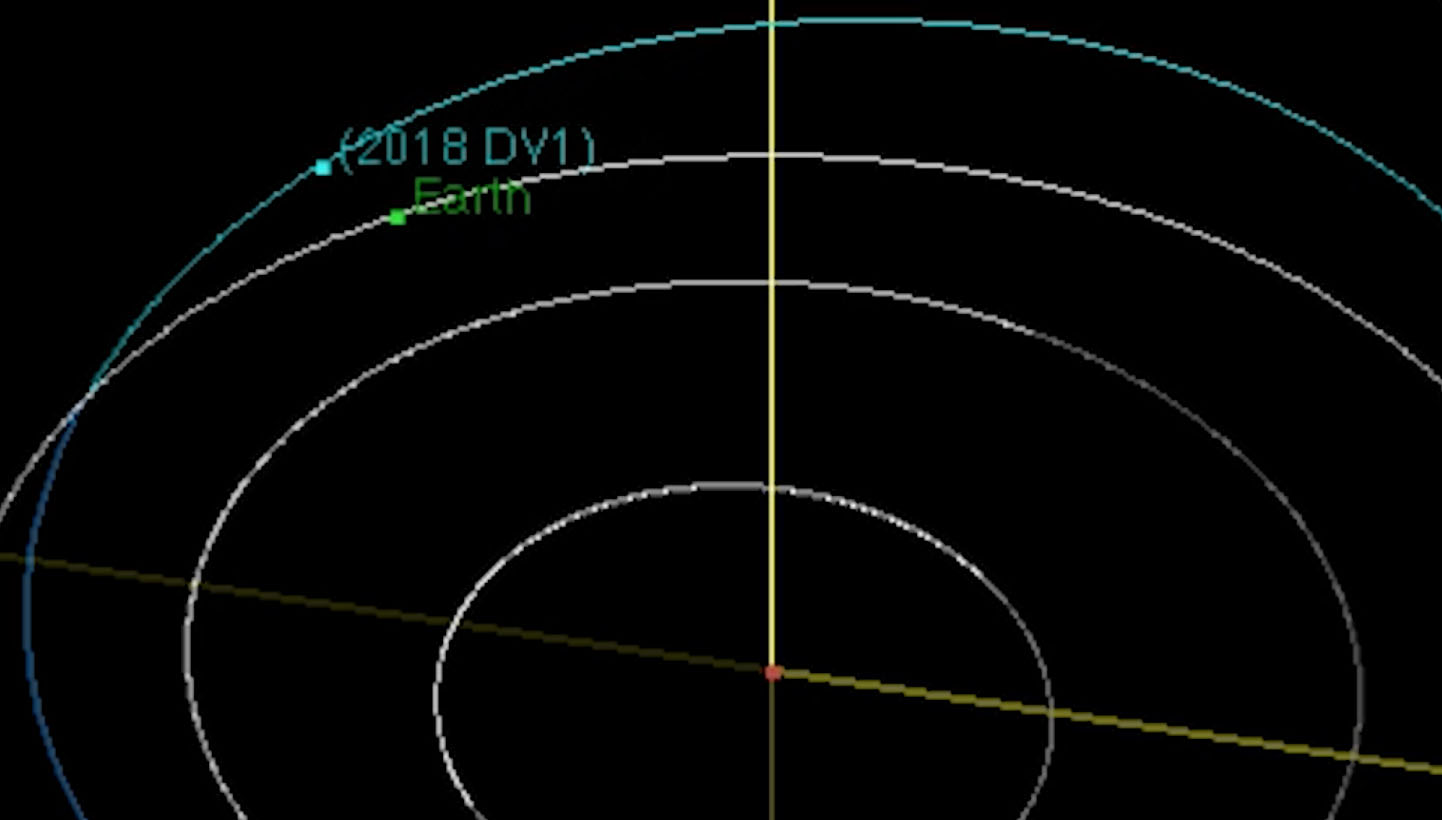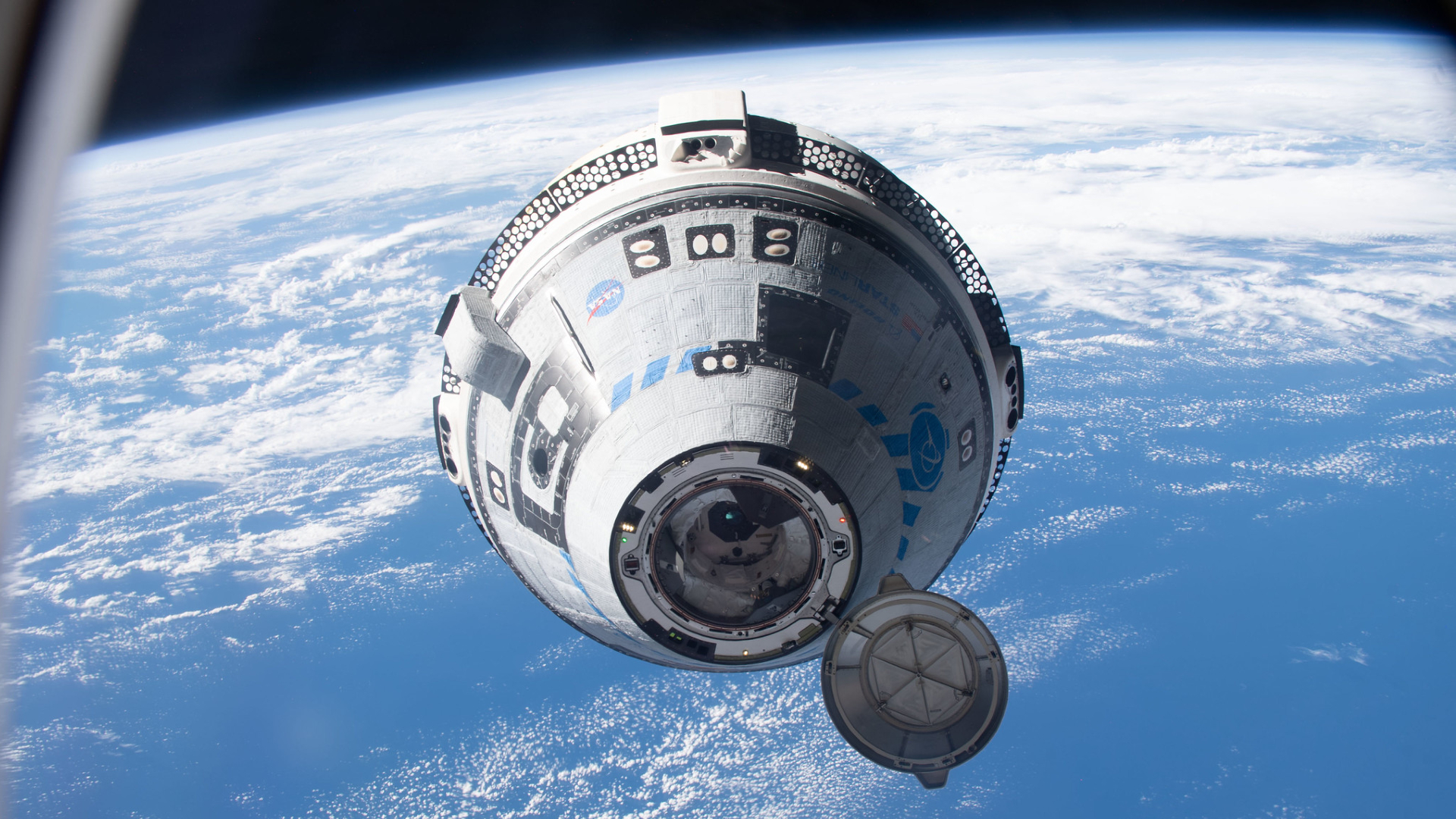A Bus-Size Asteroid Will Whiz by Earth Friday
A small asteroid will zip safely by Earth on Friday (March 2), and you have a chance to see it as a pinprick of light in the sky in a live webcast.
The newfound near-Earth asteroid, called 2018 DV1, is about the size of a bus and will approach within 70,000 miles (113,000 kilometers) of Earth during its flyby, according to scientists with NASA's Asteroid Watch program. The asteroid is about 23 feet (7 meters) wide, the program's asteroid-tracking widget stated.
The Virtual Telescope Project will host a free webcast, led by astrophysicist Gianluca Masi in Ceccano, Italy, for the event. The webcast will feature views of the asteroid as seen by a 16-inch (41 centimeters) robotic telescope at the Tenagra Observatories in Arizona. You can watch the webcast live here Friday, beginning at 12:30 a.m. EST (0530 GMT). [In Photos: Potentially Dangerous Asteroids]
Astronomers using a telescope at the Mount Lemmon Observatory in Arizona first spotted asteroid 2018 DV1 on Monday (Feb. 26), according to an update from the International Astronomical Union's Minor Planet Center in Cambridge, Massachusetts.
Friday's asteroid flyby comes on the heels of another close encounter by the asteroid 2018 DU on Sunday (Feb. 25). That asteroid got within about 196,000 miles (315,000 km) of Earth during that flyby.
The Virtual Telescope Project is also tracking another asteroid, called 2017 VR12, as it makes its own close flyby of Earth on March 7. The asteroid will be nearly 870,000 miles (1.4 million km) from Earth at its closest point during the flyby.
According to the Minor Planet Center, asteroid 2017 VR12 is 492 to 1,542 feet (150 to 470 m) wide. That size, combined with its flyby distance to Earth, qualifies the object as a "potentially dangerous" asteroid. But that doesn't mean you should panic; NASA classifies any near-Earth asteroid that is larger than 492 feet across in an orbit that approaches within 4.6 million miles (7.5 million km) as a potentially hazardous object.
Breaking space news, the latest updates on rocket launches, skywatching events and more!
Email Tariq Malik at tmalik@space.com or follow him @tariqjmalik and Google+. Follow us @Spacedotcom, Facebook and Google+. Original article on Space.com.

Tariq is the award-winning Editor-in-Chief of Space.com and joined the team in 2001. He covers human spaceflight, as well as skywatching and entertainment. He became Space.com's Editor-in-Chief in 2019. Before joining Space.com, Tariq was a staff reporter for The Los Angeles Times covering education and city beats in La Habra, Fullerton and Huntington Beach. He's a recipient of the 2022 Harry Kolcum Award for excellence in space reporting and the 2025 Space Pioneer Award from the National Space Society. He is an Eagle Scout and Space Camp alum with journalism degrees from the USC and NYU. You can find Tariq at Space.com and as the co-host to the This Week In Space podcast on the TWiT network. To see his latest project, you can follow Tariq on Twitter @tariqjmalik.

